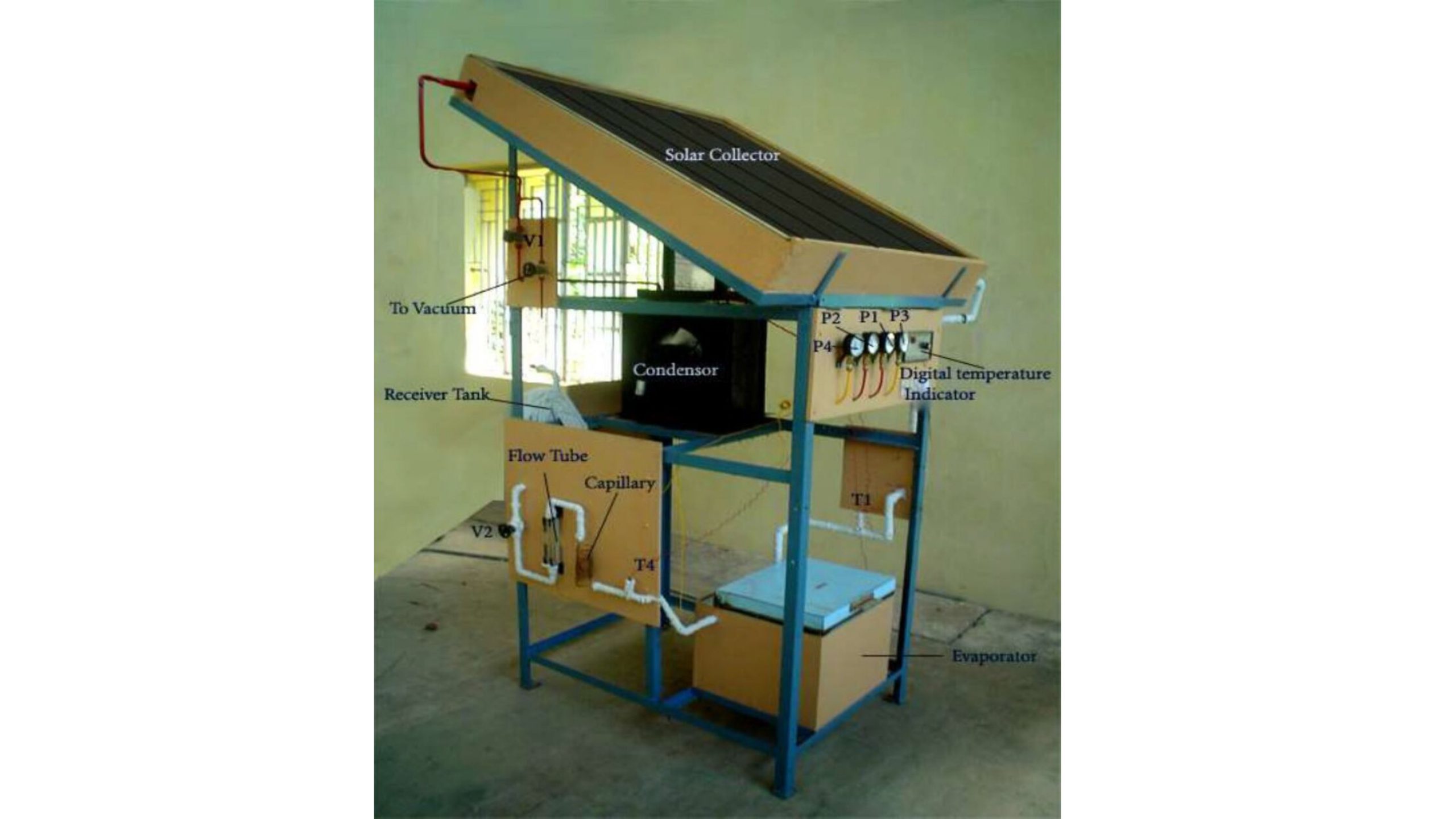A collaborative research team including the American Institute of Physics (AIP) has developed an optimiser tool that designs, evaluates, and maximises solar powered adsorption cooling systems.
How do solar cooling systems work?
Solar-powered adsorption cooling systems (SACS) have gained traction as a renewable energy technology that can potentially provide clean power for air conditioning, and refrigeration while, significantly reducing the load on the electric grid. However, a common issue that scientists have encountered is that, typically, these systems lack energy efficiency.
SACS, which work by turning solar energy into heat, consists of an adsorption bed, condenser, liquid storage tank, expansion valve, and evaporator. At night, water or another refrigerant is vaporised through the evaporator.
During daylight hours, heat obtained from the sun causes the vapor to travel through the condenser, where it is re-liquefied to release latent heat. The liquid eventually returns to the evaporator to repeat the process.
One of the most important elements of SACS is the pairing of materials used in the adsorption process in which atoms or molecules of a substance (or the adsorbate) adhere to the surface of a porous material (or the adsorbent), like activated carbon and zeolite, to maximise the surface-to-volume ratio.

CREDIT: Saravanan Namasivayam and Edwin Mohan
How was the optimiser tool created?
In the Journal of Renewable and Sustainable Energy, by AIP Publishing, researchers from Anna University, India. developed an optimiser tool to design, evaluate, and maximise the performance of different types of SACS under various operating scenarios. The tool was created using Visual Basic programming language that is straightforward to learn and enables rapid application development.
“Our user-friendly optimiser is a multifunctional tool capable of designing and analysing a complete solar powered adsorption refrigeration system,” explained Edwin Mohan, co-author. “Our tool is capable of assessing different combinations of operational parameters to determine the settings that maximise system performance.”
In their study, the researchers used their computational tool to test two adsorbent and adsorbate pairs: activated-carbon and methanol, and zeolite and water. The experiments were carried out over four days in a prototype SACS with a cooling capacity of 0.25 kilowatts.
They discovered that the activated-carbon-methanol combination achieved a higher coefficient of performance, but the zeolite-water adsorption system could operate at higher temperatures.
The optimiser tool predicted the proper material mass concentration ratios. The method calculated the cooling load, predicted maximal performance, and conducted the overall performance analysis of the cooling system.
Although the study focused on residential home cooling systems, the researchers said their optimiser tool could be extended to higher capacity systems.
To keep up to date with our content, subscribe for updates on our digital publication and newsletter.









